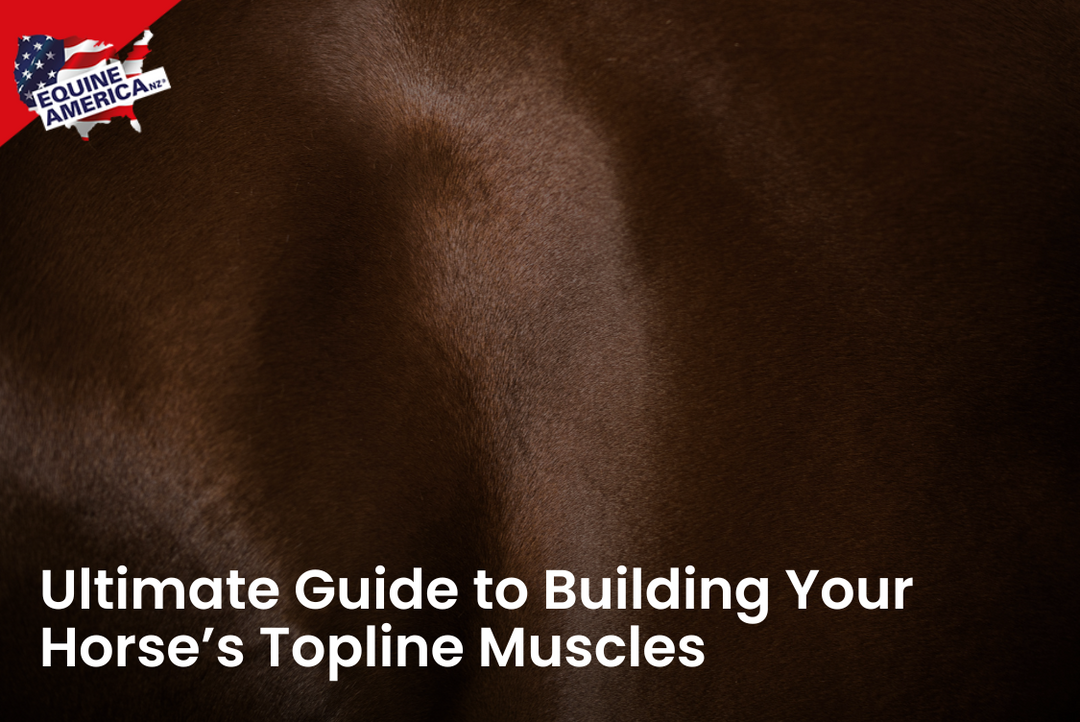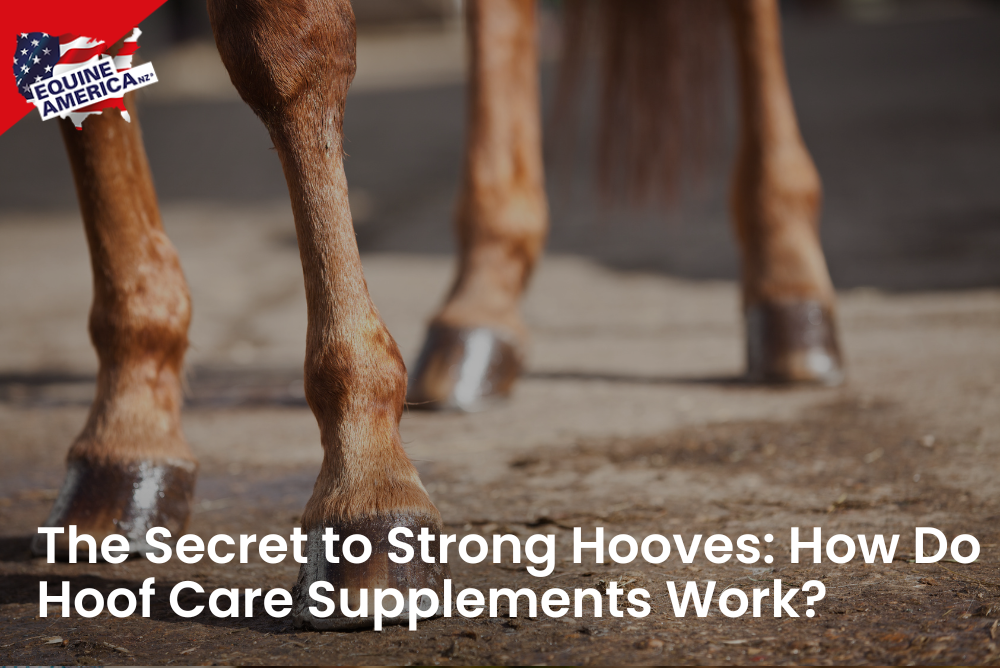Joint disease is one of the most common reasons for lameness in horses, ranging from mild and intermittent to severe, painful, and debilitating. Osteoarthritis or degenerative joint disease is probably one of the factors most likely to limit the working career of all horses and ponies. It can reduce performance in competition horses and affect the quality of life and pasture soundness in older horses.
In today’s blog article, we’ll be discussing everything related to the joint, skin, and hoof health of your horse, including how joint care supplements can help. Keep reading to learn more!
Joint Diseases In Horses
Joint diseases can be a common occurrence among horses. There are a number of causes of joint disease, including:
- Wear and tear. The rigours of training and competition, especially on hard or uneven ground, can lead to wear and tear of the joints. With insufficient tissue recovery time between sessions, subchondral bone may become brittle which allows overlying cartilage to absorb more impact, making it harder to keep up with a repair.
- Direct trauma. Direct trauma ranges from forced movement beyond the normal range of motion of the joint, damage to a support structure such as a collateral ligament, or a joint penetration or fracture resulting from a severe impact such as a kick or hitting a cross-country fence.
- Genetics. Inherited developmental defects such as osteochondrosis dissecans (OCD) create irregularities in the joint surface. Inherited poor conformation can result in abnormal joint loading, all of which contribute to premature aging of joints.
- Poor nutritional balance or excessive feed. Especially in the early years when the musculoskeletal system is still developing, a lack of key nutrients to match the growth rate can affect cartilage formation. Obesity may also put more strain on joints through increased weight bearing.
What Happens in Joint Disease?
A healthy joint is one where the two bones that meet are each covered with a spongy layer of subchondral bone, with an overlying smooth, cushioning layer of articular cartilage. It should be encased in a joint capsule which is lined with a synovial membrane that produces synovial or joint fluid. The small amount of fluid within this sac contains many important substances that help keep cartilage healthy. One example of such a substance is hyaluronic acid which gives joint fluid its oil-like viscosity and is an important structural component for joint cartilage repair.
Cartilage is continuously repairing micro-damage. Because it doesn’t have its own blood supply, it relies on the bone underneath and the synovial fluid bathing it to supply nutrients and key molecules to keep the cartilage healthy.
The viscous fluid and smooth, cushioning cartilage allows the bones to glide over one another, during movement of the joint, and allow shock absorption ranging from lighter, everyday activity to high-impact movement including jumping and galloping when the joint is placed under great strain.
Structures of the joint that provide stability include bones, ligaments, tendons, the joint capsule, and the rough articular cartilage. If damage such as wear and tear or a severe injury is done to any of these structures, it can trigger an inflammatory response. The body will send increased blood supply, ‘clean-up’ and nerve pain enzymes, and other components to the damaged site to protect, repair, and control the damage.
A little, controlled inflammation is the normal start to the healing process. However, uncontrolled inflammations and continued joint micro-trauma result in the destruction of vital large molecules called glycosaminoglycans (GAGs). It can also lead to a reduction in the thickness and shock-absorbing properties of the joint fluid and cartilage. Special cartilage-repairing cells called chondrocytes, which produce and maintain the water-based cartilage matric from collagen and proteoglycans, require a supply of vital nutrients.
If the rate of repair cannot keep up with the rate of damage, the cartilage surface becomes thinner and thinner until eventually, it wears out irreversibly. If joint movement is no longer smoothly gliding, this tips the balance towards more inflammation and damage and the production of scar tissue. In addition, there may be excessive production of diluted, poor-quality joint fluid which will result in a reduction in the normal range of motion for the joint. Pain will also occur.
Cartilage does not have nerve fibres. However, inflammation and stretching of the joint capsule or irritation of the underlying subchondral bone will stimulate pain signals. This is done to reduce activity or protect the joint from further damage. Once the cartilage has been destroyed it cannot be replaced. This becomes even more painful for the horse, who will start to become increasingly lame as the damage progresses.
Providing the key building blocks in diet to help maintain joint fluid quality and allow chondrocytes to keep up with cartilage repair is vital to maintaining joint health, especially in performance horses. It becomes even more important as the horse ages because the natural repair process slows down.
Prevention and Management of Joint Disease
Small changes in management can make a big difference in minimising joint irritation and damage. The horse is a large athletic animal whose joints will experience wear and tear even with gentle riding or during quiet field rest. With that being said, there are a few examples of how you can prevent and manage joint disease in your horse:
- Keeping a horse fit, strong, and active actually promotes joint health by improving joint metabolism, mobility, stability and control.
- All horses’ joints, not just those that are stiff or old, benefit from a warm-up and a cool-down. It also helps to avoid working on hard surfaces at any gait faster than a walk.
- Distended joints have reduced quality joint fluid, lubrication, and metabolism. Magnetic boots, support bandaging, and increased turnout may all help to reduce joint distension. Horses with osteoarthritis should avoid prolonged periods of time standing in one place as this can cause them to stiffen up.
- Keeping a horse’s weight under control reduces pressure on the joints.
- Optimal foot balance, toe length, and showing support can have a significant impact on alleviating peak forces through the normal lib. Remedial farriery with guidance from your vet may help alleviate pressure through diseased joints
- Prompt action to rest inflamed joints and to discuss anti-inflammatory options with your vet can minimise long-term damage.
- Select a good quality joint health support product that suits your horse’s needs.
Explanation of Terms and Ingredients Relating to Joint Supplements
There are numerous variations of joint supplements for horses, each coming with a different combination of components. There are several popular ingredients you will find in joint supplements for horses including the following:
- Amino Acids – building blocks of proteins. Key amino acids such as glutamine are important in the synthesis of glucosamine which in turn is a precursor for glycosaminoglycans, a major component of cartilage.
- Boswellia – this is a plant extract also known as frankincense. Boswellia is an extract that has been used in Asian and African medicine for centuries in various forms. It is well known for treating chronic inflammatory diseases and illnesses as well as numerous other health conditions.
- Cartilage – specialised smooth gliding and ‘shock absorbing’ tissue found on the ends of bones. Produced by cells called chondrocytes, which are constantly renewing and replacing cartilage to preserve its highly hydrated matrix which is essential for these properties. This degenerative joint disease occurs when chondrocytes have inadequate raw materials such as collagen and proteoglycans to keep up with the rate of damage caused by wear and tear and inflammation. Once the cartilage has been destroyed it can’t be replaced, so it is vital to ensure that the diet provides good-quality raw materials for chondrocytes to repair cartilage.
- Chondroitin Sulphate – variable length sugar chains of highly sulphated GAG. The important structural component of cartilage protects against compression. Mechanisms of action at the joint level include anti-inflammatory activity, stimulation of production and proteoglycans and hyonate and reduction in the activity of cartilage-damaging enzymes.
- Collagen Type II – a compound found alongside proteoglycans and hyaluronan in the water-based matric which is produced by cartilage cells called chondrocytes. Collagen helps to give cartilage its strength.
- Copper – an important trace mineral, incorporated into many enzyme systems, especially those involved in the synthesis and maintenance of elastic connective tissue such as cartilage.
- Glycosaminoglycans (GAGs) – highly polar molecules which attract and hold water. Important examples include hyonate, which acts as a lubricant in joint fluid or chondroitin, which gives cartilage its shock-absorbing properties.
- Glucosamine – an amino sugar that the horse’s body can produce for itself, by combining glucose and the amino acid glutamine. It can also be harvested from shellfish shells. Glucosamine comes in many forms, such as glucosamine hydrochloride or N-acetyl glucosamine. Glucosamine is essential in the production of cartilage against damage. It is the rate-limiting factor in the synthesis of glycosaminoglycans (GAGs) and also has anti-inflammatory properties.
- Hyaluronic Acid (Hyonate) – a vital component of synovial fluid, which acts as a lubricant and shock absorber. When a joint is swollen, the synovial membrane can only produce a limited supply of hyonate, resulting in a dilute, poor-quality joint fluid.
- Ligaments – are bands of tough, elastic connective tissue which connect bone to bone, give stability to joints and limit their movement. Stretching or tearing them can make joints unstable.
- Manganese – a key trace element with anti-oxidant properties which is also vital for the synthesis of chondroitin in the horse's body. It aids in the formation of connective tissue and bones.
- MSM – Methylsulphonylmethane is a bioavailable source of sulphur – important for repairing sulphur-containing bonds, such as those in collagen. It is also thought to have anti-inflammatory properties.
- Osteochondrosis Dissecans (OCD) – a condition that develops in joints when a small segment of bone begins to separate due to a lack of blood supply.
- Proteoglycans – a protein ore with glycosaminoglycan ‘side branches’. Combines with collagen in the production of cartilage, and helps to give cartilage its flexibility and ‘sponginess’.
- Silicon – an important mineral in the formation of bone, collagen for the cartilage matrix, and a component of hyaluronic acid.
- Subchondral Bone – Subchondral bone is a layer of bone just beneath the cartilage in a joint. The ‘chondral’ refers to cartilage, while the prefix ‘sub’ means below. The subchondral bone is a shock absorber in weight-bearing joints.
- Tendons – are located at the end of a muscle and attach muscle to bone. As the muscle contracts, the tendon comes into action to move the bone and joint. Tendons are made of fibrous connective tissue and have a little more elasticity than ligaments.
Get Your Horse Supplements From Equine America NZ!
Equine America NZ is known for high-quality supplements. All our products are manufactured in BETA NOPS licensed premises and conform to the EU and UK legislation that governs animal feeding products. In simple terms, we adhere to the guidelines meant to minimise the risk of prohibited substances in our supplements.
Please give us a call today at 0800 440 888 to learn more or leave an enquiry.




